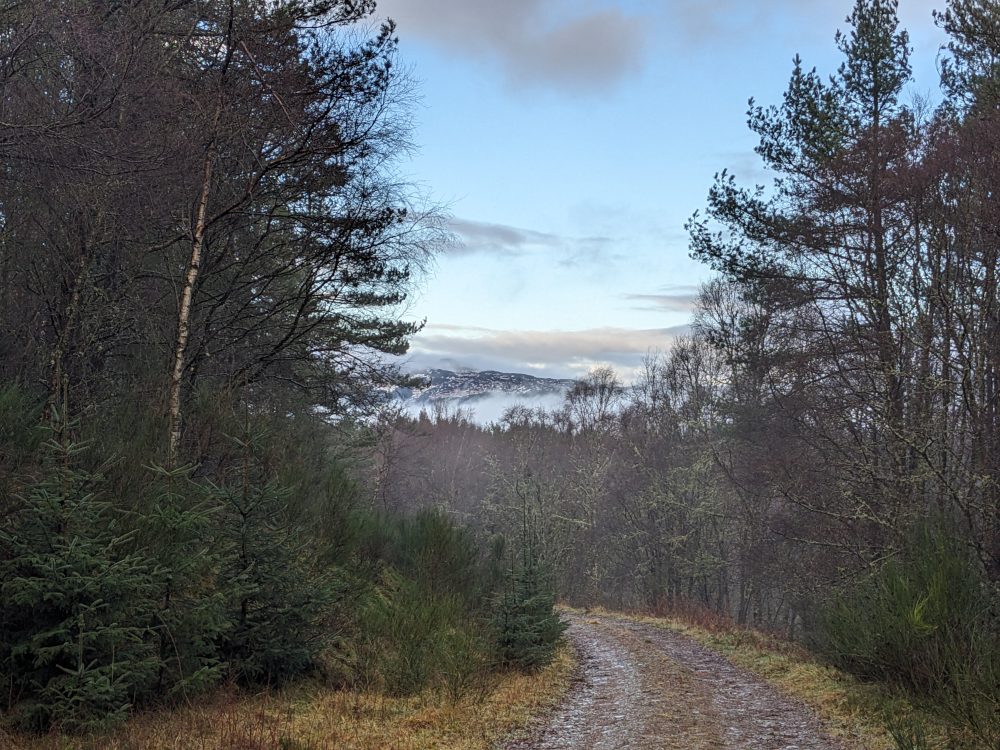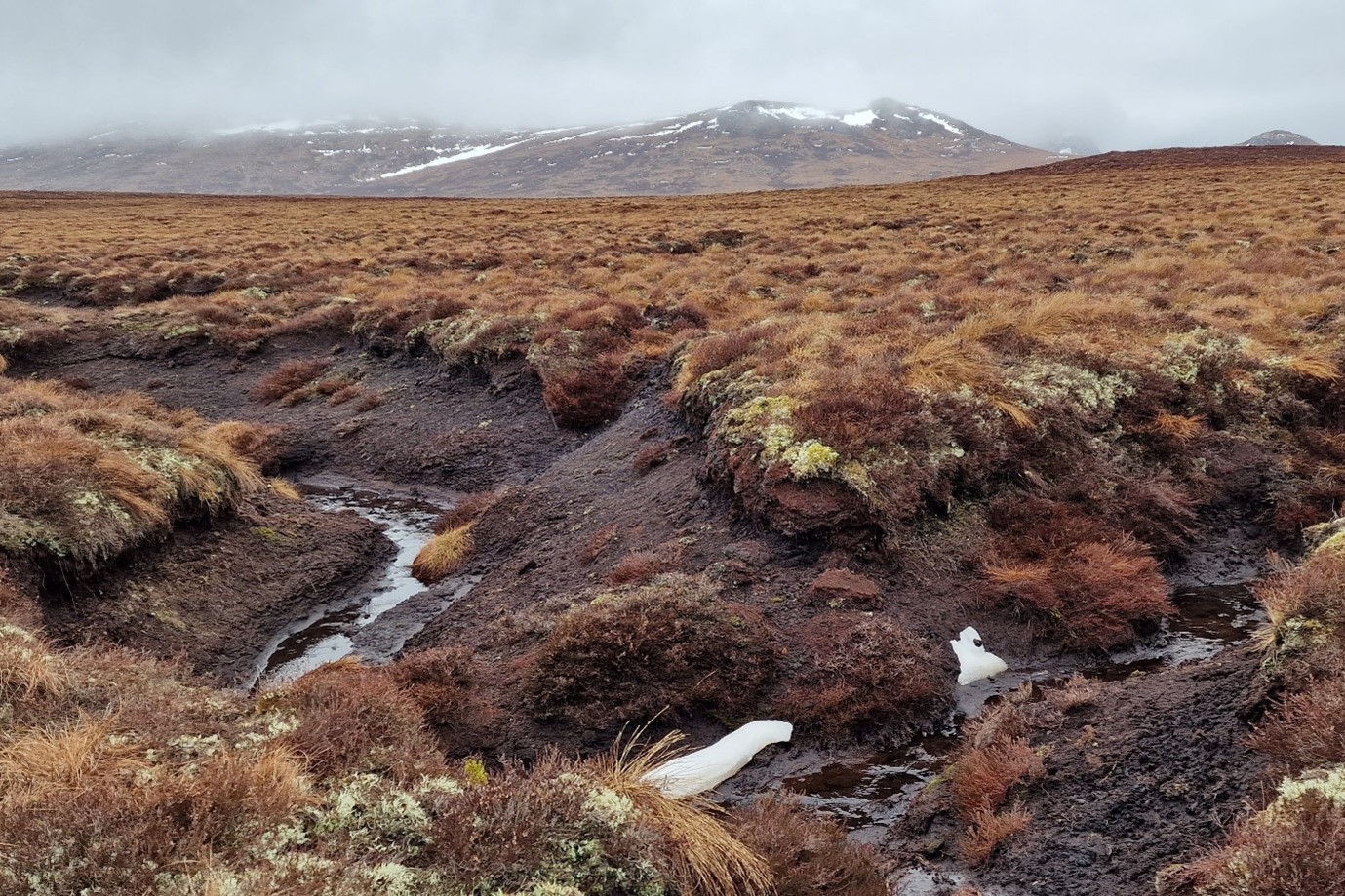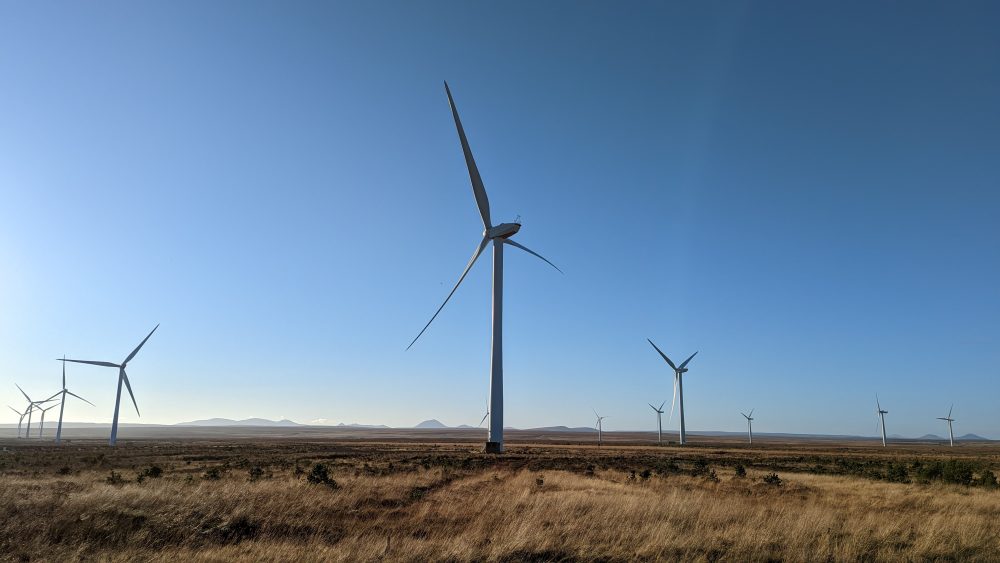Land Use
Land Use in Scotland
Scotland’s distinctive and diverse range of landscapes are a significant part of the country’s natural and cultural heritage. They make a valuable contribution to Scotland’s economic, cultural and social interests, benefiting people’s health and wellbeing, as well as tourism and the local economy.
The twin climate change and environment crises mean considerations as to how we own, use and manage our land have never been as important as they are now. Scotland’s land and the natural capital it supports are some of our most valuable assets. It is vital to our environment, economy and wellbeing as individuals and communities.
This page covers key areas of land use within rural and island Scotland:
- Agricultural Reform Programme
- Peatlands Policy
- Land Reform Bill
- Scottish Forestry
- Biodiversity
- Bioenergy
- Private Investment in Natural Capital
Underpinning plans and strategies include:
- Land Use Strategy
- Land Use and Agriculture Just Transition Plan
- Rural Delivery Plan
Agricultural Reform Programme
Agricultural support in Scotland is changing. The Scottish Government want to transform how it supports farming and food production in Scotland to become a global leader in sustainable and regenerative agriculture.
From 2025, new rules will apply to agricultural payments in Scotland.
We are doing this so we can help farmers and crofters to:
- Produce quality food more sustainably
- Play your part in tackling climate change
- Help protect and restore our natural environment
There are three main changes in 2025:
- The start of the Whole Farm Plan
- A new calving-interval for the Scottish Suckler Beef Support Scheme
- New protections for peatlands and wetlands
You can find more information on the ARP section of the Rural Payments and Services website: https://www.ruralpayments.org/topics/agricultural-reform-programme/
Peatlands Policy
The Scottish Government Peatland Unit works to protect, manage and restore Scotland’s peatlands.
Scottish Government funded peatland restoration is delivered by Peatland ACTION – a flagship partnership established by the Scottish Government with five public sector Delivery Partners– NatureScot (NS), Loch Lomond and Trossachs National Park Authority (LLTNPA), Scottish Water (SW), Cairngorms National Park Authority (CNPA) and Forestry and Land Scotland (FLS).
- Scotland has a significant area of peatlands, and they are critical to mitigating and adapting to the linked climate and nature emergencies.
- Peatlands cover around 2 million hectares (or 25%) of Scotland and are of national and global significance. 66% of all UK peatlands are found in Scotland, and our blanket bogs represent around 10% of the global total.
- Peatlands in good condition provide many benefits: capturing and storing carbon, supporting nature, reducing risks of flooding and wildfires, and improving water quality. Healthy resilient peatlands, therefore, have a central role in mitigating and adapting to the linked climate and nature emergencies.
- Around three-quarters of Scotland’s peatlands are degraded through drainage, extraction, overgrazing, burning, afforestation, development and acid deposition. Degraded peat offers fewer benefits and emits carbon, worsening the climate emergency. Degraded peat is responsible for around 16% of Scotland’s total net emissions.
- Protecting, managing and restoring degraded peatlands restores the benefits they offer. It enhances the resilience of peatland ecosystems and their ability to adapt to the changing climate. It also supports our Just Transition to net zero by providing good green jobs and economic benefits in rural communities across Scotland.
In 2020, the Scottish Government committed to provide £250m towards restoring 250,000 hectares of peatland over a period of 10 years.
The policy prospectus ‘New Leadership – A Fresh Start’ commits to reaching 110,000 hectares of that target by 2026.
The delivery of over 10,000 hectares of peatland restoration in 2023-24 has served as a benchmark for activity, with a further 10,000 hectares committed to be delivered this year in the September 2024 Programme for Government (PfG).
Land Reform Bill
The Scottish Government’s is seeking to improve Scotland’s system of land ownership, use, rights and responsibilities, so that our land may contribute to a fair and just society while balancing public and private interests.
The Scottish Government is committed to an ongoing programme of land reform – working within the available powers and resources it has. The Scottish Government want Scotland to have a strong and dynamic relationship between its land and people, and to be a nation where rights and responsibilities in relation to land and its natural capital are fully recognised and fulfilled.
You can read more about the actions the Scottish Government is taking to progress land reform here: Land reform – gov.scot (www.gov.scot)
Contact: landreform@gov.scot
Scottish Forestry

Woodlands deliver wide-ranging benefits for the economy, society and nature. Appropriate policy and regulation is vital in putting appropriate rules, guidance and incentives in place to enable land managers and the wider forest sector to deliver these benefits. Further detail is set out in the Scottish Forestry Strategy.
The Scottish Forestry Strategy has three key objectives. These are on forestry’s contribution to economic growth, resilience of the forest estate and benefits that flow from it, and the contribution to health and well-being.
Targets and outcomes for the forestry sector are set out in the Scottish Forestry Strategy Implementation Plan which also provides a range of economic, social and environmental indicators against which outcomes can be assessed.
More details can be found on the Scottish Forestry website
Biodiversity
The Scottish Government aim to protect and restore biodiversity, support healthy ecosystems, connect people with the natural world, and maximise the benefits of a diverse natural environment and the services it provides, contributing to sustainable economic growth in Scotland.
We are at a tipping point for Nature – it is in decline across the globe with around 1 million species already facing distinction. This crisis is caused by human activity, including pollution, climate change, the destruction of natural habitats, and unsustainable farming and fishing practices.
The twin crises of climate change and nature loss are linked, and we must tackle them together. Restoring nature will reduce carbon emissions, and tackling the climate crisis is essential if we are to prevent extinctions. We must be Net Zero AND Nature Positive.
We all depend on biodiversity – the biodiversity crisis affects everyone. It provides our food, helps prevent flooding and soil erosion, purifies our water and contributes to our wellbeing, by providing recreation and a sense of place.
The Scottish Government vision is to have restored and regenerated biodiversity across Scotland’s land, freshwater and seas by 2045, and to have a nature-positive Scotland by 2030.
The Scottish Biodiversity Strategy and associated Delivery Plan set out the vision, priorities, expected outcomes and actions needed for tackling the nature emergency.
More information at Biodiversity – gov.scot
Bioenergy
Bioenergy is an umbrella policy area covering bioenergy feedstocks, processes, and end uses including applications with carbon capture technology.
It has a role to play in Scotland’s journey to net zero. It is already a key component of our energy system and has huge potential to reduce emissions across our economy when used with carbon capture technology.
- Analyse the responses to the consultation on the draft Bioenergy Policy Statement. We aim to publish the analysis report in early 2025.
- Finalise the Bioenergy Policy Statement (BPS). We aim to publish the finalised BPS in 2025.
More details can be found at: Annex B – Responding to this consultation – Bioenergy – draft policy statement: consultation – gov.scot (www.gov.scot)
Natural Capital Market Framework
A new plan to attract responsible private investment into natural capital markets has been launched for Scotland.
The Natural Capital Market Framework was launched by the Minister for Employment and Investment at the Nature Finance UK 2024 conference on 5 November.
The Framework provides guidance for investors, land managers and communities on attracting responsible private investment into peatlands, woodlands and wider nature restoration in a manner that maintains high standards.
Natural Capital Market Framework – gov.scot (www.gov.scot)

Gully erosion on a blanket bog – Image Credit Farm Advisory Service
Private Investment in Natural Capital
The Scottish Government work on supporting community ownership of assets, through the Community Right to Buy legislation (which is currently under review) and the Scottish Land Fund, and on embedding a natural capital approach into Government and public sector decision making and funding.
The work directly supports improvement of National Performance Indicators for community ownership and the condition of our natural capital and provides support for the delivery of a much wider set of policy commitments on communities, the wellbeing economy and nature.
Key outcomes;
- to increase the community ownership of land and assets,
- to review the Community Rights to Buy,
- to rebuild our natural capital,
- to develop a values-led, high integrity market for responsible private investment in natural capital.
Further info can be found;
Community Rights to Buy – Land reform – gov.scot ; Scottish Land Fund – Land reform – gov.scot; Natural Capital Market Framework – gov.scot
Land Use Strategy
Scotland’s land and the natural capital it supports is one of our most valuable assets, vital to our national prosperity and to our wellbeing as individuals and communities. Scotland’s Land Use Strategy recognises the value of Scotland’s land and sets out our long-term vision and objectives for sustainable land use.
The way in which land is owned, managed, and used is centrally important to a variety of outcomes including achieving our net-zero and biodiversity targets. It is only through understanding these multiple and sometimes conflicting relationships we can look to secure the fine balance that will be needed to allow our land to contribute sustainably to our multiple long term national priorities.
The strategy provides the opportunity to bring together these different strands and set out an integrated approach which balances the different demands which we place on our land.
The third strategy contained the following 2050 vision:
- 2050 Vision: A Scotland where we fully recognise, understand and value the importance of our land resources, and where our plans and decisions about land use will deliver improved and enduring benefits, enhancing the wellbeing of our nation.
Whilst seeking to achieve the following objectives:
- Land based businesses working with nature to contribute more to Scotland’s prosperity
- Responsible stewardship of Scotland’s natural resources delivering more benefits to Scotland’s people
- Urban and rural communities better connected to the land, with more people enjoying the land and positively influencing land use
Scotland’s 4th Land Use Strategy is due for publication by the end of March 2026 and work is underway regarding its development.
The third strategy is available here. For information on the development of the fourth strategy contact alastair.noble2@gov.scot or keith.mcwhinnie@gov.scot
Land Use & Agriculture Just Transition Plan

Scotland has committed to become a net zero greenhouse gas emitting nation by 2045, with interim targets of 75% by 2030 and 90% by 2040, (against 1990 baseline levels). These ambitious targets require a collective effort with all corners of society playing their part, including governments, businesses, organisations, communities, and households.
Within this wider national challenge, land use and agriculture has a unique role. Alongside the other emitting areas of Scotland, it has been tasked with reducing its greenhouse gas emissions. Unlike other sectors however, land use and agriculture has been asked to deliver this while producing food and, at the same time working on behalf of all of Scotland to remove additional carbon from the atmosphere by providing the ‘carbon sink’ to help balance left-over emissions from our daily lives.
The Land Use and Agriculture Just Transition Plan will look to complement ambitions and actions of other Government plans and strategies such as Scotland’s Climate Change Plan, Adaptation Plan, (forthcoming) Rural Delivery Plan, (forthcoming) Bioenergy Action Plan and National Island’s Plan, as well as Scotland’s Environment, Biodiversity and Forestry Strategies to name but a few.
This first plan, will focus on introducing, promoting, and embedding just transition within the land use and agriculture sectors. It will set out our baseline approach and actions as well as providing the strategic direction of travel for future plans. It will support the Scottish Governments commitment to a transition to a net zero and nature friendly future that is fair and just and seeks to minimise inequalities whilst maximising opportunities. The plan will introduce a baseline approach, including the establishment of a long-term vision and outcomes as well as a set of shorter-term objectives. The next stage in this process is a formal consultation due for publication in early 2025.
The actions that will be needed for Scotland to become a net zero and nature friendly nation by 2045 will transform all aspects of our economy and society. Our land use and agricultural sectors have a major part to play. Contributing to this future whilst continuing to provide services such as food production, nature restoration, energy generation, the provision of land and timber to build homes, ecosystem services, and places where people from both our urban and rural communities can go for recreation and to connect with our environment and history. Helping to empower, support and enable the people who live and work on our land and our wider rural, costal and island communities is why a just transition is essential.
The plan team can be contacted at LAJTP@gov.scot. In addition, a discussion paper was published in 2023 signalling the start of the LAJTP work. It can be accessed here.
Rural Delivery Plan
The Rural Delivery Plan is an opportunity to set out the actions that government is and will be taking that impact rural mainland communities, placing a new focus on rural delivery.
Scotland’s rural economy is a major source of growth. There is incredible opportunity in our rural communities to progress Scottish Government objectives, particularly in seizing the economic opportunities and community benefits from the just transition to net zero, alongside ensuring that our precious natural resources are managed sustainably to benefit all of Scotland.
But we know that rural communities face significant and unique challenges, such as access to reliable digital infrastructure, availability of affordable, local housing, access to regular and reliable public transport, coupled with demographic challenges.
The Rural Delivery Plan is a key opportunity to take a fresh look at how we can work together to bring about change and address the issues that we face in rural Scotland.
The Rural Delivery Plan aims to have three distinct outcomes:
1.Provide a new focus on delivery for rural Scotland by setting out the government’s collective effort, how the Government is and intends to deliver for rural Scotland, and the full range of policies, actions and investments that have been put in place to improve outcomes for rural Scotland;
2.Achieve more evidence-based and coherent policymaking by establishing a set of Key Performance Indicators by which data-based progress can be tracked over time, enabling evidence-based actions and communication; and
3.drive rural mainstreaming in Scottish Government policymaking via the Rural Assessment Toolkit
A progress update was recently shared on the Scottish Rural Network








